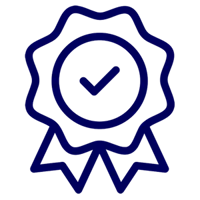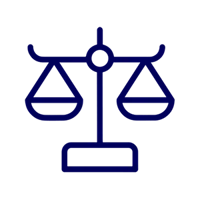
programme member at nucleargraduates
The best advice I could give anyone is to follow what interests you, it's hard to be successful if you don't enjoy what you're doing!
About Munieba...
Who am I?
"The three personality types I received from the quiz were Coach, Quality Controller and Trainer. I feel like Coach and Trainer both place an emphasis on your relationships with other people, and how you approach this. Both of them talk about understanding people, being caring towards people and being friendly. I definitely think these are all really important traits to have, both within and out side of the workplace. The Quality Controller looks at how you approach a task rather than people, and places an emphasis on trying to do the right thing, the right way and trying to ensure that all work that's performed is to the highest standard. This is something I really relate to as I can be somewhat of a perfectionist.Whilst these might not necessarily seem like the obvious roles for an engineer to have, I think all three play an important part in helping me do well at my job. As a design engineer, it's really important to be able to liaise with other people e.g. other departments in the business and with the customer. To get the most out of these conversations, it's important to be understanding of the people that you're talking to, to be a good listener, to be friendly and approachable, to be able to simplify the complex information that you're conveying and to be passionate about both sharing and receiving knowledge.I think problem solving, being good with detail, challenging the way things are done and being able to manage risk are all important in being a design engineer. Oftentimes we are faced with challenging issues, where we have to try to improve components to make them easier, cheaper or quicker to manufacture. We have to appreciate all the inner details and workings of the component, whilst also seeing the bigger picture, and how changes to it will affect the components it interfaces with.Being efficient, organised, proactive and taking pride in exceeding expectations are traits that are important in any workplace, and all allow you to deliver your best work.I think being trustworthy, fair, honest and ethical , having a sense of justice and liking to keep people safe are traits that are really important in an industry as critical as the one I work in. The nuclear industry really prides itself on its commitment to safety and its ability to demonstrate its learnings from cases where things have gone wrong in the past. It's a heavily regulated industry and requires each and every worker to play its part in committing to safety regulations"
What do I do?
"As a nucleargraduate, I am able to move between different companies and roles. I am currently working at Rolls-Royce as a Design Engineer. I work on the submarines side of the business, and we create nuclear reactors for naval submarines. As a design engineer, your principal responsibilities are developing component design definitions (so deciding how we make a component, what it looks like, why its needed, what safety aspects we need to consider in its design, manufacture, operation and disposal). An aspect of design is creating drawings and models for the components you're in charge of. We need to support the manufacture of components, this can involve changing the design definition to make a component easier, quicker or cheaper to manufacture. We have to communicate with all teams across the business about changes we implement to the design and how this may affect their work e.g. any models that physics may have created with the component in mind, manufacturing processes can change the material properties so we'd need to talk to material science for that, a different design might make it more susceptible to corrosion so that's something we'd have to discuss with chemistry. We also have to present designs to our customer, to see if they're happy with it.The thing I enjoy most about my job is being able to communicate with so many different teams within the business. This really develops your understanding of how everything comes together. Design is so exciting because you have to consider every single element of a component, every way in which it interacts with another component, its function and how any changes to it could affect it. You get a really broad understanding and appreciation of the different sciences that govern the reactor like physics, chemistry and material science. I also find engineering drawings absolutely amazing, because of the concise way in which they deliver information."
How did I get here?
"After completing my A-levels, I started reading a Bsc Nuclear Science and materials, which really opened my eyes up to how big the nuclear industry was. I heard of the nucleargraduates scheme at a careers fair, and decided to apply.I never really saw myself as an engineer, but have always loved maths and using maths for problem solving!"
The life I live
"In my spare time, I like to read and draw. I have 3 nephews and I love to spend time with them too! I'm also really keen on languages, as evidenced by the fact I took Spanish A-level and have been trying to teach myself Mandarin recently."
My typical day
"For me, a typical day involves talking to people in other teams such as material engineers (who investigate the effects different methods of manufacturing something have on material properties), manufacturing engineers (who consider whether a design can be manufactured according to the given instructions), stress engineers (who consider the different stresses on a component in its lifetime, and how this may affect its ability to do its job) etc. In addition to this, I spend a lot of time looking at engineering drawings, thinking about how we might improve them. From a manufacturing perspective, it’s not always possible to produce a component to the exact dimensions the engineer wants. For this reason, all dimensions are given what’s called a ‘tolerance’, this tolerance expresses the range that the dimension could fall in. For example, if you want a rectangular plate of width 187.35. You could put a tolerance either side of that figure of 0.05 so the dimension can lie between 187.30 and 187.40. If the manufacturers still don’t believe this is achievable, you would have to change this tolerance again. There’s a risk associated with this, as the width of this rectangular plate could affect other parts, it’s my job as a design engineer to consider whether it’s possible to change that tolerance. It might be that the plate is separating two magnets, and if the plate is allowed to be smaller, the force the magnets exert on the plate will be too strong and could lead to a compression of sorts. My job is not to model that, but then to talk to the physics team about the effects of this. If the magnets and the plate separating them were all in a container, all the widths would have dimensions on them. It would be my job to calculate the worst possible scenario of having the container’s width at its minimum, and the width of the magnets and the plate at their maximums, and then think about whether they would still be able to fit in the container.The way we communicate with other teams can be informal over a phone call, but when we put in requests for them to do models such as considering the magnetic field of the magnets, or considering the implications of size on material properties or manufacturing processes, we have to write up a technical document. This document will explain why we’re making changes to the design, any possible changes we have come up with and what we want them to do. We will also have to include any calculations we’ve done.To sum it up, my job involves talking to lots of different teams, performing calculations based on engineering drawings and considering improvements or adjustments to make it cheaper, quicker or easier to build a component. "
My qualifications
"I studied A level Maths, Physics and Spanish and then went on to read Bsc Nuclear Science and Materials at University of Birmingham."



